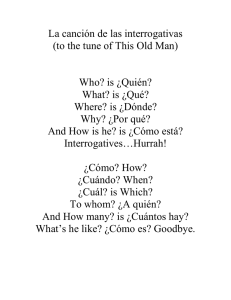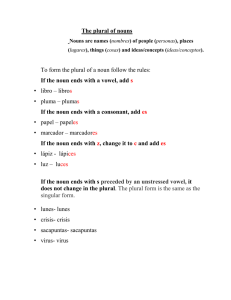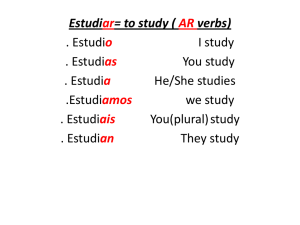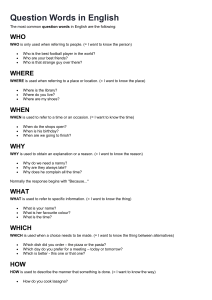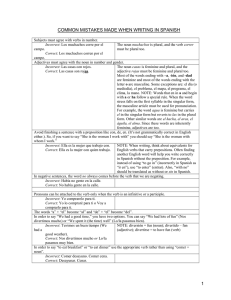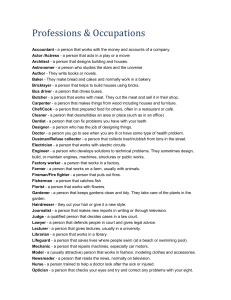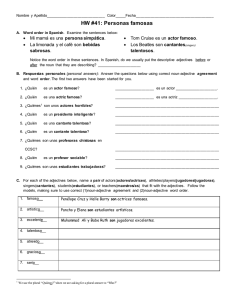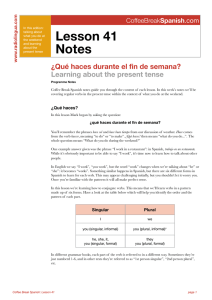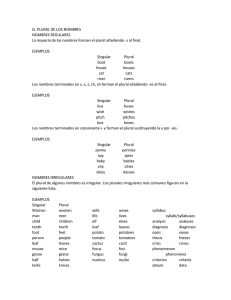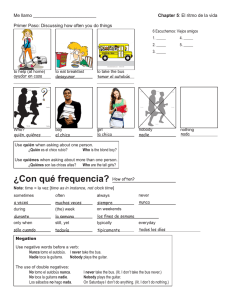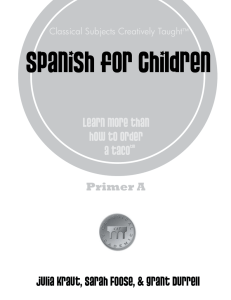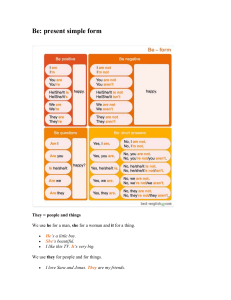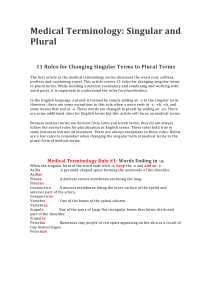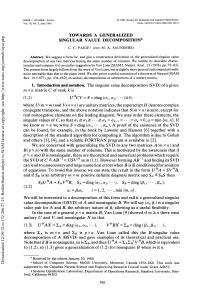Spanish Question Structure Spanish Question Structure
Anuncio
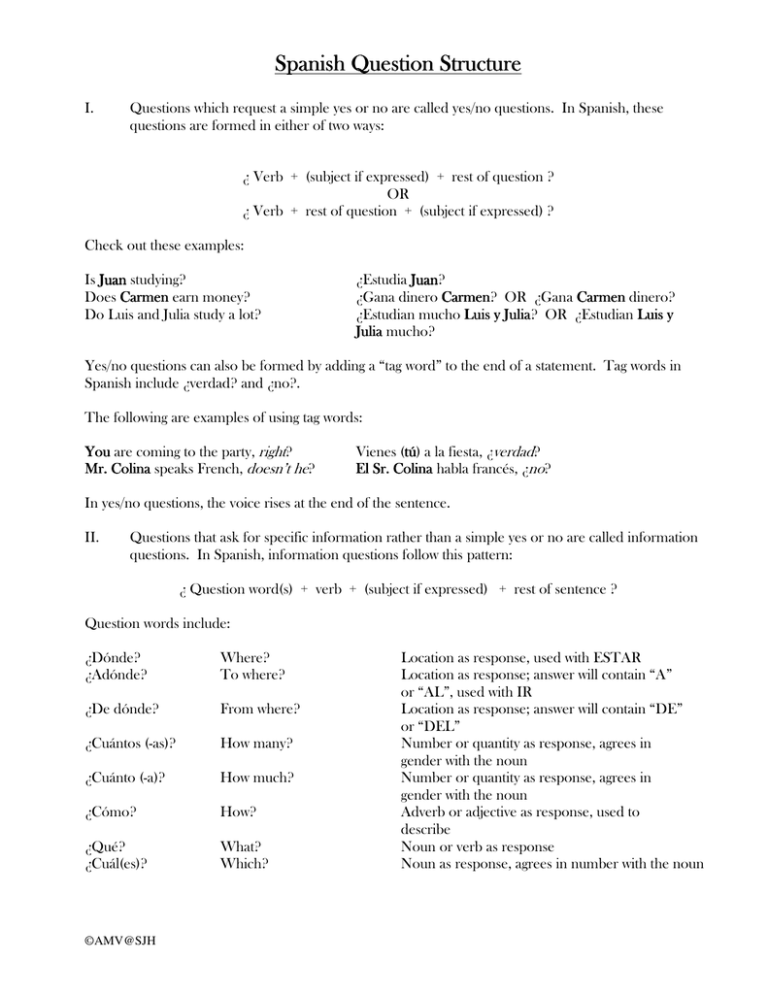
Spanish Question Structure I. Questions which request a simple yes or no are called yes/no questions. In Spanish, these questions are formed in either of two ways: ¿ Verb + (subject if expressed) + rest of question ? OR ¿ Verb + rest of question + (subject if expressed) ? Check out these examples: Is Juan studying? Does Carmen earn money? Do Luis and Julia study a lot? ¿Estudia Juan? Juan ¿Gana dinero Carmen? Carmen OR ¿Gana Carmen dinero? ¿Estudian mucho Luis y Julia? Julia OR ¿Estudian Luis y Julia mucho? Yes/no questions can also be formed by adding a “tag word” to the end of a statement. Tag words in Spanish include ¿verdad? and ¿no?. The following are examples of using tag words: You are coming to the party, right? Mr. Colina speaks French, doesn’t he? Vienes (tú tú) tú a la fiesta, ¿verdad? El Sr. Colina habla francés, ¿no? In yes/no questions, the voice rises at the end of the sentence. II. Questions that ask for specific information rather than a simple yes or no are called information questions. In Spanish, information questions follow this pattern: ¿ Question word(s) + verb + (subject if expressed) + rest of sentence ? Question words include: ¿Dónde? ¿Adónde? Where? To where? ¿De dónde? From where? ¿Cuántos (-as)? How many? ¿Cuánto (-a)? How much? ¿Cómo? How? ¿Qué? ¿Cuál(es)? What? Which? ©AMV@SJH Location as response, used with ESTAR Location as response; answer will contain “A” or “AL”, used with IR Location as response; answer will contain “DE” or “DEL” Number or quantity as response, agrees in gender with the noun Number or quantity as response, agrees in gender with the noun Adverb or adjective as response, used to describe Noun or verb as response Noun as response, agrees in number with the noun ¿Quién? ¿Quiénes? ¿De quién(es)? Who? Who? Whose? ¿Con quién(es)? With whom? ¿A quién(es)? To whom? ¿Cuándo? ¿Por qué? When? Why? • • • • • III. Person or people as response Plural Person as response Person(s) as response; answer will contain “DE” or “DEL” Person(s) as response; answer will contain “CON” Person(s) as response; answer will contain “A” or “AL” Time expression as response Reason as response; often “porque” is in the answer All questions will begin with an upside-down question mark. This is a signal to the reader that the words that follow are a question. Since often the subjects of sentences are dropped off, it is possible to have the same exact words acting as a statement or as a question. The punctuation tells the reader how the sentence should be interpreted. Quiénes is the plural form of quién. quién It is used when the person asking the question expects more than one person as a response. response It is followed by the ellos form of the verb. Both quién and quiénes can be the subject of a sentence. Both cuál and qué can be translated as “what” in English. However, the verb SER is most commonly used with cuál. cuál Qué is used only when the speaker is asking for a definition. definition Note the accents on all the question words. You will have to memorize their placement. Also note por qué as a question is TWO WORDS, WORDS whereas porque as an answer is ONE WORD and is written without an accent. accent To answer a question in Spanish you must know first who the subject of the question is. You can follow the same procedures on the “Spanish Sentence Structure” reference sheet to figure out the subject. Once the subject has been identified, you can use the following chart to answer the question: SINGULAR SUBJECTS PLURAL SUBJECTS Person/ Subject in the question 1st person singular (yo) 2nd person singular (tú or Usted) 3rd person singular (él, ella, it, a name, a noun) 1st person plural (nosotros, -as or anyone + yo) Person/ Subject in the answer 2nd person singular (tú or Usted) 1st person singular (yo) 3rd person singular – the subject will not change 2nd person 1st person st plural OR 1 plural person plural (nosotros) (depends on if the person answering the question is part of the group or not) ©AMV@SJH 2nd person plural (ustedes or anyone + tú or Ud.) 3rd person plural (ellos, ellas, plural noun or compound subject) 3rd person plural – the subject will not change
